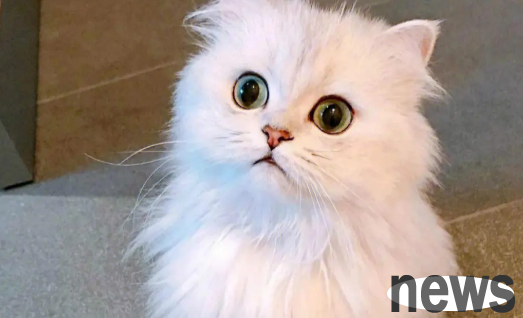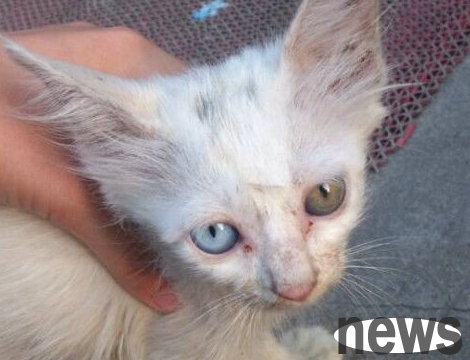What is the reason for turbid eyes in cats? Cat eye disease! Healthy cats have clear eyes. If the owner suddenly finds that the cat's eyes are no longer clear one day, as if they are covered by a thick layer of fog, and are turbid and white spot...
What is the reason for turbid eyes in cats? Cat eye disease! Healthy cats have clear eyes. If the owner suddenly finds that the cat's eyes are no longer clear one day, as if they are covered by a thick layer of fog, and are turbid and white spots, it is very likely that there is a lesion inside the eyeball. For this situation, it is necessary to check and deal with it in time, otherwise the cat is likely to be blind.

Eye disease has various causes and complex factors. White eyes will be easier to detect, and early treatment will be easier. Generally speaking, the causes of eyeball turbidity include: keratitis, eyelid inversion, cataracts, and green endostats.
1. Keraitis
Keratitis is a general term for inflammation in corneal tissue. Characterized by corneal turbidity, corneal neoplasty, corneal ulcers, corneal perforation and corneal spots, various cats and dogs can occur, but it is common in long-haired cats and dogs. The most common cases are caused by trauma, foreign bodies, improper drugs, and infections, and some of the reasons are unknown. Perforation caused by corneal ulcers is difficult to cure.
For treatment, chloramphenicol eye drops are combined with atropine eye drops; cortisone eye drops can only be used in combination with antibiotic eye drops when the cornea does not rupture. Foreign bodies and secretions in the corneal and conjunctival sacs need to be removed to facilitate the absorption of ophthalmic medications. In addition, corneal ulcers in cats are mainly caused by herpes virus. Iodine glycoside eye drops are used 4-6 times per day, and SGG Eye Treatment Ointment can also be used.
2. Cataracts
Cataracts are a disease in which the crystal whiteness in the eyes can lead to vision loss. Catacts in pet cats may be genetic or inflammatory reactions caused by trauma or inside the eyes. In addition, internal diseases such as diabetes can also cause cats to suffer from cataracts. At present, the only way to treat cataracts is surgical treatment.
Note that parents themselves cannot treat cataracts. Be sure to take the cat to a professional pet hospital for professional diagnosis and treatment. Then ask an experienced veterinarian to perform the operation on the cat. During the operation, what parents can do is to learn more about the knowledge about treating cataracts, and at the same time cooperate with the veterinary treatment plan. Of course, it is also very important to take good care of the cat.

3. Green Instrument
Green Instrument refers to glaucoma, which refers to the occurrence of symptoms such as eye pain, turbidity in the eyes or pupil opening, such as sharp increase in intraocular pressure. There are many reasons for this, and it is said that there are more complications of congenital or other eye diseases.
Green Instruments can lead to blindness, so once you have a green Instruments, you should consult a doctor as soon as possible. The reason for blindness of glaucoma is that excessive intraocular pressure leads to degeneration of the retina and obstruction of the axial flow of the optic nerve. When the optic nerve and retina are permanently damaged, vision will never be restored.
Early medication and surgical treatment can maintain a certain degree of vision for a certain period of time and to a certain extent. Unfortunately, if the intraocular pressure and pain are persistently too high, it can lead to blindness in the animal within 48 hours. The treatment methods for glaucoma include surgical methods and internal medicine methods, and the treatment time is longer. Drug treatment may initially require hospitalization, during which the hospital will give oral or infusion medications that change the osmotic pressure to reduce intraocular pressure in the shortest time.
Once the intraocular pressure is controlled, the treatment should be continued with drugs that can stabilize the intraocular pressure for a long time. Drugs that increase water discharge, such as pilocarpine, DEMECARIUM, and latanoprostaglandins, are usually used. Sometimes drugs that affect aqueous humor production are also used, such as carbonic anhydrase inhibitors and timolol.